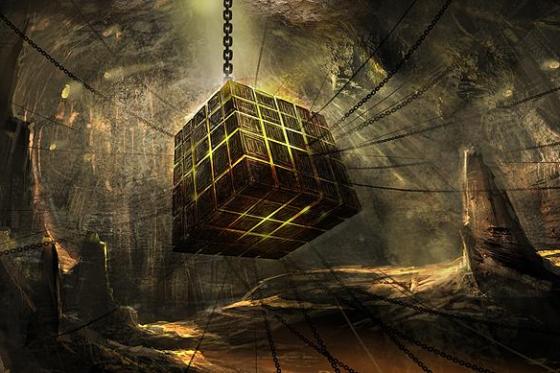Main 5 Types of Escape Rooms You Will Play

There is a whole bunch of completely different escape game themes: sci-fi, criminal, post-apocalyptic, mysterious and more. However, there are also different types of escape rooms that have their own features and specifics. Some of them are better for larger teams as they require a significant amount of teamwork and collaborative thinking. Others are perfect for teams starting from two people as they provide each player with the chance of solving their own puzzles. The better you understand the differences, the more appropriate choice you will be able to make.
To realize what room is the most suitable for you and your friends (or family, or company team building event), we suggest you read this article. Here we will briefly explain the difference between the most common types of escape rooms in Calgary. By the end of the article, you will be able to distinguish which type is the most suitable for your group size and the level of skills represented. You can also use this information to make your team building event even more useful from the practical point of view.
Linear escape rooms
In a linear escape room, you have a number of puzzles that can only be solved in a particular sequence. Basically, you don’t get to see the next clue until you’ve found the previous one. All the questions come up one after another, which is great for smaller teams so that there are no people with nothing to work on.
There can also be several rooms to go through before reaching the final goal, but you can only open the door to the next room when you solved all the puzzles in this one. This format might be perfect for beginners as it doesn’t overwhelm the players with too many details. It can also be used for smaller companies where everyone can concentrate on one task of the game. Getting everything solved together can be an unforgettable experience for a team. So, linear escape rooms:
-
Are well organized;
-
Suggest to solve puzzles one by one;
-
Do not overwhelm with extra information;
-
Are perfect for beginners or small teams.
Non-linear escape rooms
Having a large group of up to ten people (depending on the room there can be different maximum group size), it is essential to keep every member busy at all times so that nobody’s bored. For such occasions, it’s great to choose non-linear escape room games where everybody will be engaged. In such games, there also are many puzzles, though the method of escaping is significantly more open-ended. Usually, such games have several smaller puzzles that are interconnected and lead you to the larger puzzle that should be solved in order to win the game. For small groups, it can be difficult to concentrate on all the scenario lines at the same time, that is why non-linear rooms might be more suitable for larger teams. Summing up, non-linear escape rooms:
-
Have more puzzles that may seem disconnected;
-
Often involve more gamemaster’s hints;
-
May be too confusing for beginners;
-
Suit for the larger groups.
Mixed Linear and Non-linear escape rooms
As can be seen from the title, such rooms offer the sort of a balance between first two types kinds of escape room games. They usually have a big puzzle that can be called a bottleneck. Solving it, you get a handful of small puzzles that you need to solve in order to get to another big puzzle. It comes to you in sort of waves alternating bigger and more difficult tasks with smaller and easier questions. It goes like that until you get to the prize. The main features of mixed linear and non-linear escape rooms are:
-
Well-organized and have clear sequence;
-
Suitable for any group sizes;
-
Do not overwhelm;
-
Keep all the team members busy.
Scavenger hunt escape rooms
Such rooms can be linear, non-linear or mixed. Their main idea is that they are dedicated to scavenger hunting only, and there are usually no puzzles to solve. Thus, no strategy is usually required. All you need to do is find particular objects, then find some more, and repeat again. It can be fun but also can be boring. Of course, there are such tasks in any escape game, but here they are not mixing with any real problem-solving. So, scavenger hunt escape rooms are:
-
All about finding objects and clues;
-
Require no problem-solving skills;
-
Sometimes considered boring;
-
Suit better for children and adolescents.
Red Herring escape rooms
In such rooms, you should always keep your eyes open for something that can distract your attention for a real matter or question. There might be several clues leading nowhere and meant for you to only waste time. Some players enjoy actually distinguishing real matters from misleading clues, while others get irritated in case of taking the wrong path. It can also be tricky for big teams that cannot come to an agreement and choose one direction.
Every time you see something that seems essential, make sure to analyze the whole room first. The storyline in such games can be very confusing, especially for those who don’t have enough experience. Red Herring escape rooms:
-
Are full of misleading clues;
-
Require paying attention all the time;
-
Put you at risk of wasting time;
-
Suit those with patience and experience.
Now you see that even though all of these types of escape room games are united under the same name of escape games, they are very different. It never hurts to talk to gamemaster beforehand and discuss your experience, expectations, and size of your team to be able to choose the most suitable option. It is especially important in case you are going to try this activity for the first time ever.
Come visit us in Escape Hour and we will tell you even more about each type and help you get the best experience you can imagine. We want you to have amazing memories and desire to come back and play again. We love these games, and we are sure that with the right approach each person can find great value in them.




